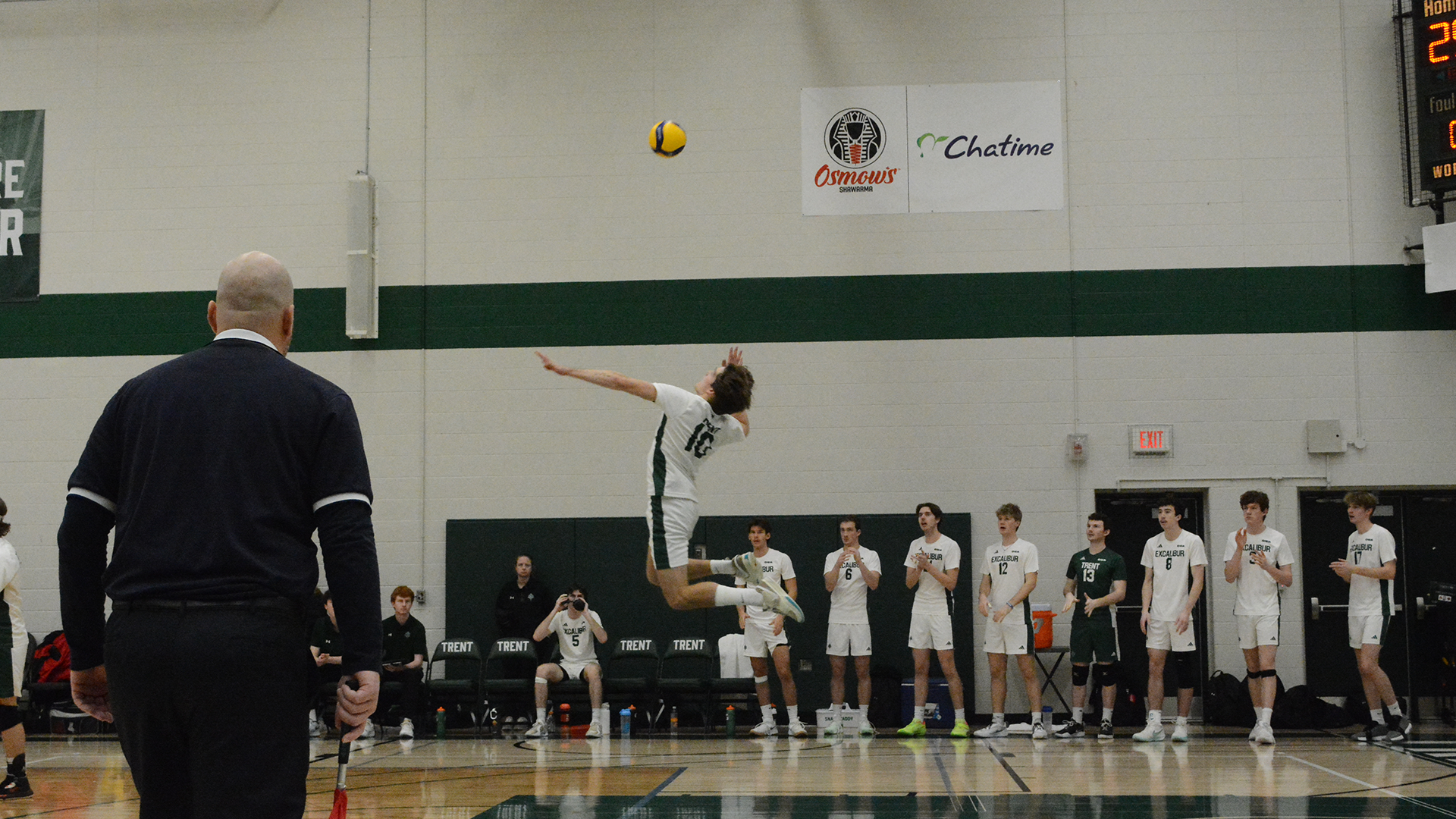This is in response to last week’s Arthur article, as there were a number of inaccuracies that should be clarified.
Background
Over the past decades, there have been many changes at Trent that have impacted the original vision of the colleges as residential communities for students and faculty.
Growth in enrolment has meant that most students live off campus (40 per cent of first years, almost all upper years).
The faculty connection to colleges also waned. Originally, some lived in colleges, students had individual faculty advisors and faculty were affiliated with colleges as “fellows.” Now faculty are more attached to their departments, advising is through academic advisors and more faculty members are part-time.
There have been many reviews of the colleges over the decades. While it was clear for a long time that something needed to be done, change was difficult. Some even questioned why colleges still existed.
I worked in a college at another university for 12 years. I strongly believe in the value of colleges as means to create strong, supportive communities that foster academic and personal growth.
College Planning Committee
The January 2012 Trent Academic Plan identified strengthening colleges as a goal. The provost struck the College Planning Committee (CPC), which began after I started in May 2012.
The committee identified there was a problem of disengagement with the colleges, among students (particularly off-campus students), faculty, staff and alumni.
The students most closely connected to their colleges were largely the cabinets and orientation leaders. Many students, while still paying college fees, were not engaged.
While many older alumni still felt a close sense of connection, more recent graduates were less likely to.
Communication was a challenge, as was supporting cabinet student leadership. College heads being part-time also meant that some found the role difficult to manage. The demands on full-time faculty members’ time meant they were less likely to be able take on college head positions.
The CPC worked through 2012-2013 and produced the College Planning Committee Report, which was submitted to the provost, with the final report incorporating community feedback.
Recommendations included developing clear values and goals for the colleges, encouraging unique college identities, supporting student leadership, engaging more off-campus students, developing student support hubs, peer support programming and closer connections with faculty and alumni.
College restructuring
In 2013-2014, a new structure for the colleges was developed to implement the recommendations. The staff and the OPSEU union needed to be consulted first.
Individual college assistant responsibilities were streamlined and given to the college heads and the colleges assistant. Heads were made full-time, and were OPSEU, since they were not supervising other administrative staff. The director of colleges position was created to provide a champion and leader for the Symons Campus colleges.
As noted, there was a well-attended forum for student leaders, and the restructuring plan was also presented to Trent’s faculty board, senate, board of governors and alumni council.
While there have certainly been concerns, the article did not include positive feedback. Senate minutes include that the model represents a sincere and considered attempt to develop campus life and should be applauded, and alumni council minutes recorded that the feedback from councillors was positive.
The college head and college director positions were posted and hired in spring 2014. The four student cabinet presidents/prime minister made up the majority of the hiring committee.
Director of colleges, furniture and college reserve fund
I was very troubled by the article’s characterization and speculation regarding Barry Townshend’s work and departure. Barry was director of colleges for a year and a half, not a few months, and was open about leaving for family reasons last December.
During his time at Trent he worked extremely hard to develop new college programs and initiatives. He is passionate about diversity and inclusion, and took on additional responsibilities in these areas. His departure was a loss.
The furniture purchase that was implied as the reason he left took place months before, and it was a highly consultative process with student leaders and college heads. Under-used spaces were identified which could be refurbished to increase available college student space.
The space upgrades included: furniture in the Lady Eaton Junior Common Room, Champlain Great Hall, Otonabee Commons and lounge above SC137, and the Gzowski College Atrium; moving the main OC college office to near Wenjack Theatre, to increase physical accessibility; expansion of Gzowski College Office; AV in the Champlain Living Learning Commons; and outdoor patio furniture for Champlain and Otonabee.
The furniture was purchased through an approved vendor, who also supplied new residence furniture, and was delivered in the summer. It is designed to be highly durable under intense usage. From observation, this has significantly increased students’ use of college spaces.
The college reserve fund is made up of any unspent college student fees. Over the years, it has become substantial. In 2013, the college heads and I worked on a reserve fund policy and committee which included cabinet student leaders.
The furniture purchase was less than one-fifth of the current reserve, so it has not been severely depleted. The mandate of the fund is “for projects with lasting significance and must demonstrate the long-term benefit to the college.”
For the hiring of the new director of colleges, there were again students on the hiring committee. Director-level qualifications need to include significant related experience, particularly when there are many staff, or significant budgets.
The hiring committee unanimously chose Stephanie Muehlethaler, based on her impressive employment and educational qualifications, student-centered values, enthusiasm and vision. I hope everyone will welcome her and support her in her work.
AVP students portfolio
In terms of the associate vice president students’ portfolio, there have indeed been a number of changes, although the chronologies and scope in the article are inaccurate.
When I started in 2012, the portfolio was extensive, not simply orientation and campus programs, but also careers, academic skills, counselling, health services, accessibility services, Peterborough and Durham student affairs, housing and food, spiritual affairs, crisis response and liaison with student leaders.
In 2013, when the associate dean of undergraduate studies retired, her portfolio was distributed among the academic deans and student services.
The Centre for Academic Testing joined Accessibility Services, and academic advisors came under the AVP students, as well as liaison with the Trent Community Research Centre. Colleges were partially added (jointly with the provost) before being restructured in summer 2014. That year, First People’s House of Learning also joined student services.
The food services director position was developed to improve food services, and jointly reports to the AVP students and the VP finance and administration.
In summer 2015, academic skills instructors were moved into the colleges to strengthen college academic support. Orientation and campus programming staff joined Careers in order to provide more seamless programming for students’ entire academic time here.
To clarify, Lesley Hulcoop is the administrator of the office of the AVP students, and Waleska Vernon is the director of student transitions and careers.
It’s worth noting that most administrative units at Trent are “lean” – with wide scope and relatively little hierarchy. This is largely due to financial prudence, and to the small size of the university. That said, the Trent AVP students portfolio is similar in scope to other universities.
New college initiatives
I’d like to share some of the many new college activities over the past two years. I want to commend the Symons and Traill College heads for their tireless work – I sometimes feel they don’t get enough credit!
- Communication with students. In-person and online contact; weekly event digest emails, including academic, community, and skills-building activities, and promotion of cabinet, department and student group events.
- Needs assessment surveys of all undergraduate students in Fall 2014 and 2015 semesters, and as noted, a five per cent increase in just one year in students who felt a valuable connection to their college. Helpful feedback on the activities students want to see.
- Partnership with academic departments to support events and activities, rebuild faculty connections to the colleges, and to provide both formal and informal interactions for faculty and students
- Major academically-oriented events such as the 3-Minute Paper (highlighting undergraduate research), the Last Lecture and Enweying: An Event About Extraordinary Ideas (highlighting faculty research).
- Alumni-College Engagement Task Force met throughout 2014-2015, and proposed a range of opportunities to re-engage alumni.
- Off-campus student outreach through the Off-Campus Network, and activities specifically to connect off-campus students.
- Student staff opportunities to increase liaison with students, faculty and alumni, and to provide trained frontline student information and support.
- Skills-building for students. This ranges from academic workshops, SafeTalk suicide prevention, bystander intervention, conflict resolution, careers, event planning, budgeting and more.
- Partnerships with student groups and the Peterborough community to support events, as well a range of diversity-themed activities (e.g. supporting Black History Month, “Space Between Us,” “Why Act(ivism),” Tipi Talks, and so on).
Throughout all this, existing college events, speaker series and traditions have been maintained.
Moving forward
I am deeply committed to the success of Trent’s colleges. Each college has its own unique and special character. Colleges are an integral part of our university, and of the student experience.
I believe colleges are well on their way to fulfilling this mandate, and I’m greatly optimistic about their future. It’s an exciting time to be at Trent and colleges are a key part of this.


.png)


.jpg)


.jpeg)



.jpg)

.jpg)



.jpg)



.jpg)


.png)